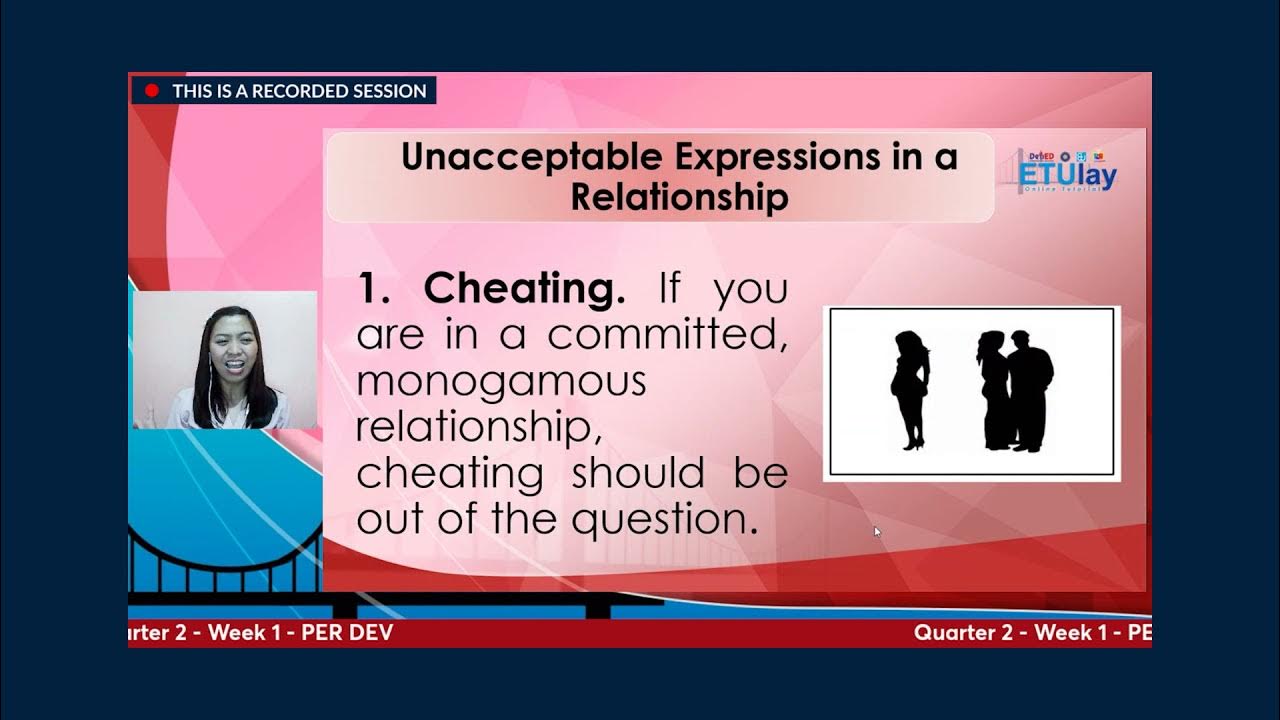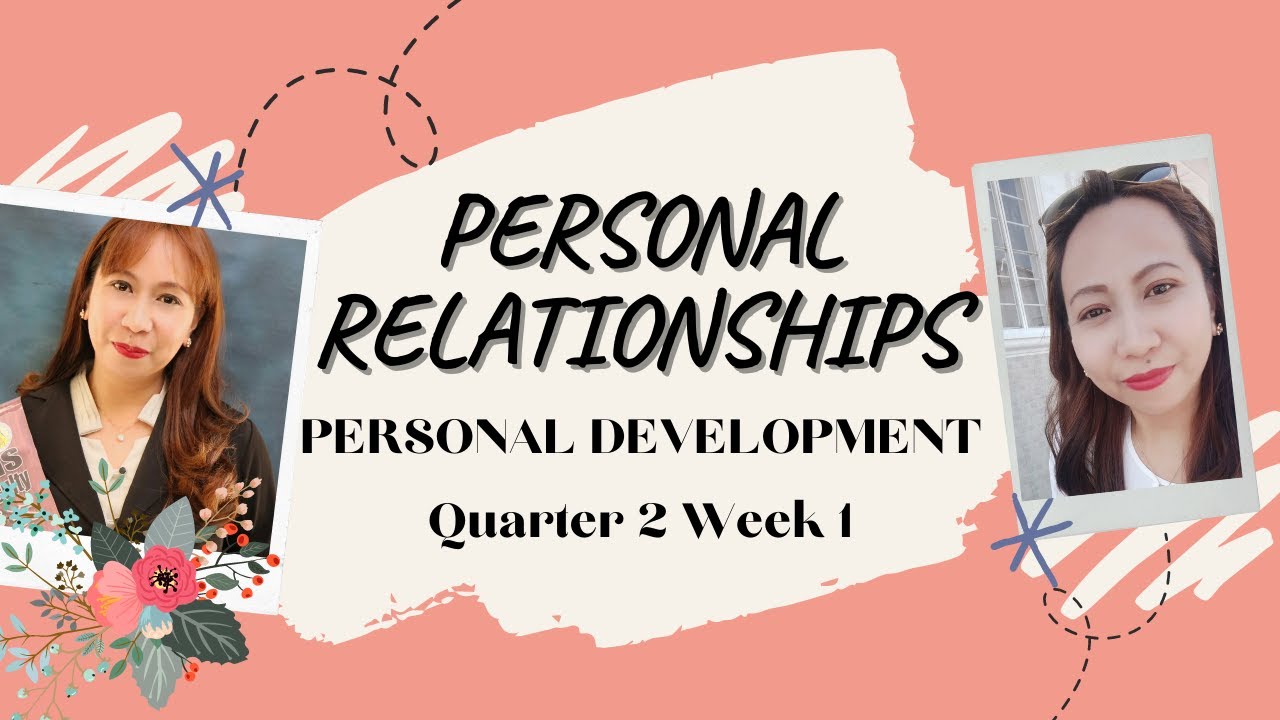SHS PERSONAL DEVELOPMENT MODULE 18: PERSONAL RELATIONSHIPS: ATTRACTION, LOVE, COMMITMENT
Summary
TLDRIn this personal development video, the focus is on understanding and expressing attraction, love, and commitment within personal relationships. The module explores the importance of these elements and their impact on relationship longevity. It delves into the science behind love, including the role of neurochemicals like oxytocin and vasopressin. The video also discusses different attachment styles and their influence on how individuals relate to others. Practical activities are provided to help viewers apply these concepts to their own lives, emphasizing the significance of open communication, trust, and respect in maintaining healthy relationships.
Takeaways
- 📚 Module 18 focuses on personal development, specifically on attraction, love, and commitment in personal relationships.
- 📝 The pre-test in the video is designed to assess viewers' prior understanding of the concepts of attraction, love, and commitment.
- 🧲 Attraction is defined as a positive connection between people who share common interests, likes, dislikes, or desires.
- 👥 Similarity, proximity, and reciprocity are key components that influence interpersonal attraction.
- ❤️ Love is a complex emotion with various definitions, including strong affection, attraction based on sexual desire, and affection based on admiration.
- 🧬 Oxytocin, also known as the 'love hormone,' plays a crucial role in forming deep bonds, especially between a mother and child.
- 🔍 Robert Sternberg's Triangular model of love identifies seven types of love, each with a unique combination of intimacy, passion, and commitment.
- 👶 Attachment styles, such as secure, anxious/ambivalent, and avoidant, affect how individuals express and perceive behavior in relationships.
- 🤝 Commitment in a relationship is about the feelings and actions that keep partners working together to maintain the bond.
- 💌 Expressing attraction, love, and commitment is essential for healthy relationships and involves empathy, trust, respect, and support.
- 🎨 The video script includes activities and exercises for viewers to apply their understanding of attraction, love, and commitment in real-life situations.
Q & A
What is the main focus of the video module presented by Ma'am Marian?
-The main focus of the video module is on personal development, specifically discussing the concepts of attraction, love, and commitment in personal relationships.
What is the essential learning competency expected from the module?
-The essential learning competency is to express ways of showing attraction, love, and commitment, and to determine the importance of expressing these in relationships.
What is the purpose of the pre-test in the beginning of the module?
-The pre-test is designed to check the viewers' prior understanding of the concepts of attraction, love, and commitment that will be discussed in the lesson.
What are the four types of love according to Robert Sternberg's Triangular model of Love?
-The Triangular model of Love by Robert Sternberg includes seven types of love, each a combination of variables from three components: intimacy, passion, and commitment.
What is the role of oxytocin in forming bonds between individuals?
-Oxytocin, also known as the 'love hormone', is a peptide that helps deepen the connection between individuals, such as between a mother and child, and is involved in the formation of strong bonds in relationships.
What are the three attachment styles mentioned in the script?
-The three attachment styles are secure attachment style, anxious or ambivalent attachment style, and avoidant attachment style, which affect how individuals interact and express behavior towards others.
What is the significance of reciprocity in relationships according to the script?
-Reciprocity in relationships is when feelings are returned in the same way as they are given. It is crucial for building and maintaining relationships, as it represents a give-and-take dynamic that is necessary for the relationship to thrive.
How does the script define 'commitment' in the context of a relationship?
-Commitment is defined as a long-term relationship between individuals, characterized by mutual support and coordination of activities. It is a choice and a cognitive process involving the decision to dedicate love to another person with the willingness to keep the relationship lasting.
What are some of the ways to express affection and develop a long-term relationship according to the script?
-Some ways to express affection and develop a long-term relationship include staying happy, being empathic, keeping open communication, showing respect, and being a helping hand in times of trouble.
What is the purpose of the activities suggested at the end of the module?
-The activities are designed to solidify the understanding and skills of the topic by providing opportunities for independent practice, self-reflection, and real-life application of the concepts learned about attraction, love, and commitment.
Outlines

This section is available to paid users only. Please upgrade to access this part.
Upgrade NowMindmap

This section is available to paid users only. Please upgrade to access this part.
Upgrade NowKeywords

This section is available to paid users only. Please upgrade to access this part.
Upgrade NowHighlights

This section is available to paid users only. Please upgrade to access this part.
Upgrade NowTranscripts

This section is available to paid users only. Please upgrade to access this part.
Upgrade NowBrowse More Related Video

ETULAY PERDEV Q2 WEEK1: Teen-age Relationships Including the Acceptable and Unacceptable....

PERSONAL DEVELOPMENT GRADE 11 QUARTER 2 WEEK 1 PERSONAL RELATIONSHIPS

PIES: The 4 Ways To Attract Your Spouse

Why Women Get Addicted to Men Who Act Like They’re Nothing

Praktikum 1 Kombis 2021

IF YOU WANT TO MANIFEST YOUR SP, JUST DO THIS SIMPLE THING!
5.0 / 5 (0 votes)